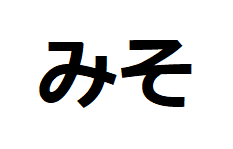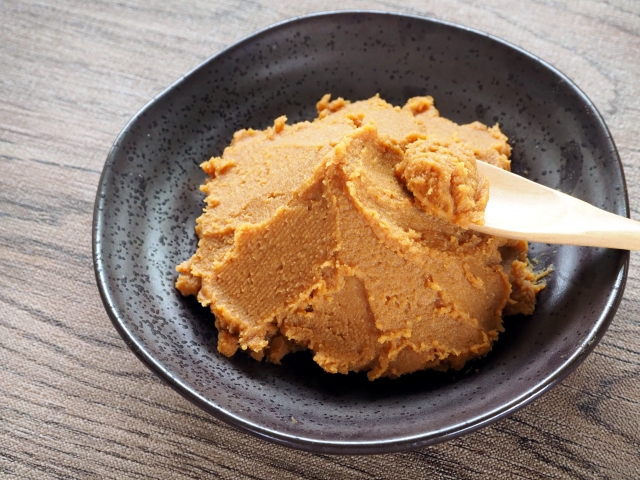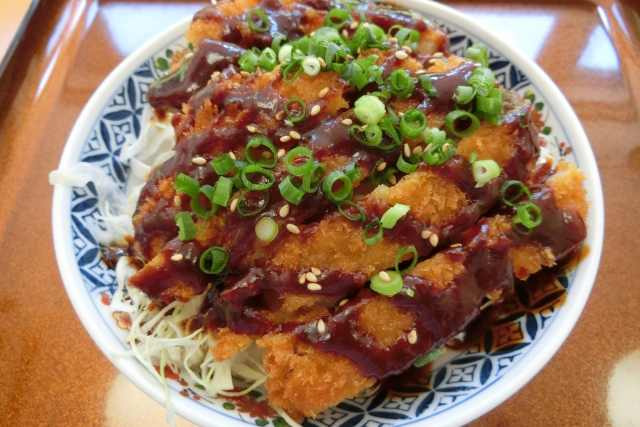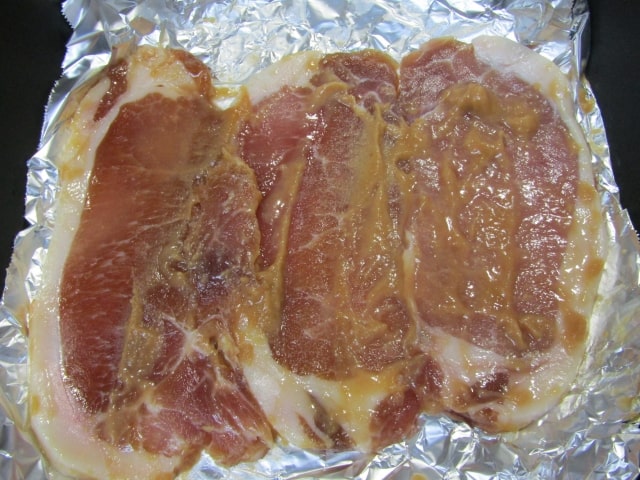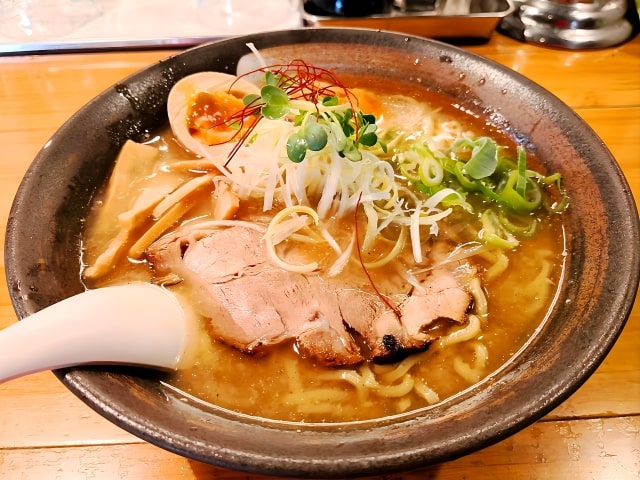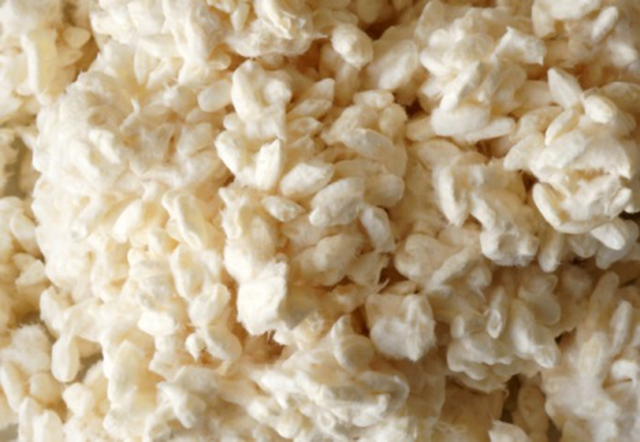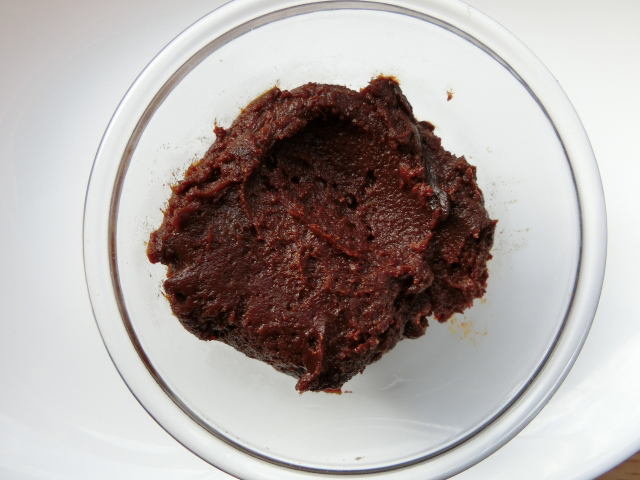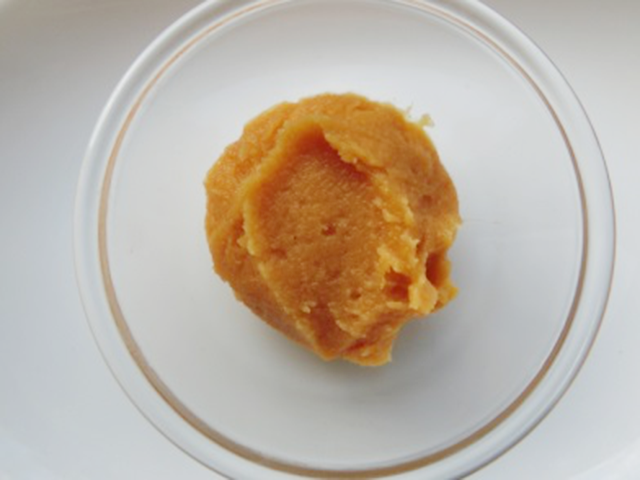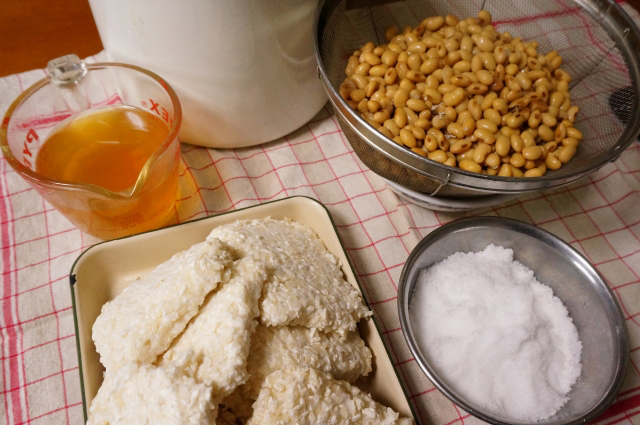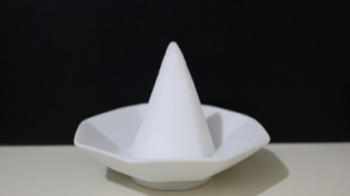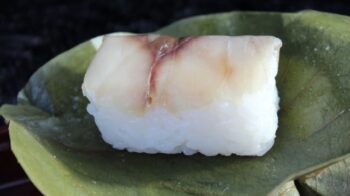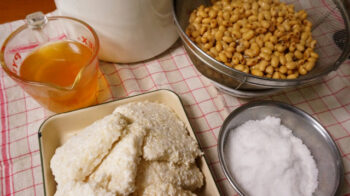Japanese Miso
Welcome to the world of Japanese Miso.
Simply put, Miso is fermented soybean paste.
Let’s learn its characteristics and classification.
Below is the contents of this page.
1. Characteristics
Because of its unique characteristics, Miso has attracted so many people.
If you are tempted to eat it, please try the recipe and experience its amazing power.
1) Merits in cooking
Firstly, the merits in cooking.
Since Miso has a high osmotic pressure, it can easily extract water from the ingredients.
In return, it gives umami to the ingredients through the amino acid in it.
Thus the dishes become delicious.
In addition, it can eliminate the smell of fish or meat by wrapping and masking it.
2) Antioxidant effect
Secondly, its antioxidant effect.
Thanks to antioxidant substances such as lecithin, saponin, isoflavone, Miso has an incredibly strong antioxidant effect.
For example,
Salted meat produces many peroxidic substances in 2 weeks.
On the other hand, meats dipped in Miso will be never oxidized.
3) without allergens
4) Nutritional value
Lastly, let’s check its nutritional value.
Modern science attests many nutritional functions of Miso.
Below are the nutrients active in it:
– vegetative protein, lecithin, saponin
⇒ maintain the elasticity of the blood vessel and prevent arteriosclerosis, cerebral infarction, thrombosis, etc.
– vitamin E, daizein, saponin,
⇒ prevent oxidation of the inside of the body and keep the body young
– trypsin inhibitor, isoflavone
⇒ prevent cancers (the anticancer effect)
– dipicolinic acid
⇒ evacuate the radioactive substances outside the body
2. Classification
Next, let’s learn the classification of Miso.
Generally speaking, there are 4 methods to classify them.
That is to say, classification based on 1.Koji, 2. color, 3. taste, 4. regions.
1) based on Koji
Firstly, the classification based on Koji.
There are 3 types:
1) komé (rice) which uses rice Koji
2) mugi (wheat) which uses wheat Koji
3) mamé (soy) which uses soy Koji
Among them, the most popular is 1) komé (rice) which is made all over Japan.
On the other hand, 2) mugi (wheat) and 3) mamé (soy) are made in relatively limited regions.
For example, the main producing area of 2) mugi (wheat) is in the western part of Japan such as Kyushu district.
As for 3) mamé (soy), its producing area is more limited; mainly in the Tokai district whose centre is Nagoya.
Incidentally, the most well known 3) mamé (soy) called Hatcho-Miso is the favourite of Tokugawa Ieyasu.
In any case, please keep it in mind that the main ingredient is always the same, that is to say, soy.
2) based on colour
Secondly, the classification based on colour.
There are two types:
1) red (aka)
2) white (shiro)
Basically, fermentation time creates the difference : the more fermented, the more reddish.
3) based on taste
Thirdly, the classification based on taste.
Generally, we divide them into two:
1) sweet (Ama)
2) piquant (Kara)
Just like Amazake and Ama-natto, ama comes from Amai (甘い) which means sweet.
Basically, the quantity of salt is the most important element to decide the taste.
But we cannot forget the proportion of Koji. If the quantity of the salt is the same, it becomes sweeter with more Koji.

Ama (i)
4) based on region
Finally, the classification based on region.
Since Miso plays an important role in the food culture in each region, we often call them with the name of the region they are made.
For example,
– Shinshu-Miso (developed by Takeda Shingen),
– Sendai-Miso (developed by Date Masamune),
– Hatcho-Miso (developed by Tokugawa Ieyasu),
– Echigo-Miso (produced in Niigata prefecture)
etc.
3. Recipe
Please click the photo.
4. Kanji and Kana
1) Kanji
To learn Kanji (Chinese characters) is always interesting and beneficial to understand what the word means.
Through Kanji, we can virtually grasp not only the meaning of the word, but also the background it was born in.
Kanji for Miso is 味噌.

Firstly, 味(mi).
味 means taste. On the left part, you can find 口(kuchi) which means mouth. Since we take foods from mouth, 口 is widely used in the words related to foods. For example, Koi-kuchi/Usu-kuchi.
By the way, mi of umami comes from this mi 味.
Secondly, 噌(so).
Although it’s complicated, you can also find 口(kuchi) in it. According to the most supported theory, this Kanji expresses a lively situation. Probably, it describes the scene where soy and koji meet and fermentation starts.
2) Kana
There are two phonograms (kana) in Japanese: 1) Hiragana and 2) Katakana.
According to the most supported theory, both of them were formed by adopting one element of a Kanji character with similar sounding.
Originally, Hiragana were only for women. But today, it has by far the wider usage.
Talking of 2) Katakana, we use it mainly for foreign origin words.
Incidentally, there are 46 characters in both Hiragana and Katakana systems.
As for Miso, Hiragana is みそ and Katakana is ミソ.
